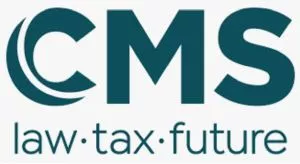- within Finance and Banking topic(s)
- in Asia
- in Asia
- in Asia
- in Asia
- in Asia
- in Asia
- with readers working within the Law Firm industries
- within Wealth Management, Media, Telecoms, IT and Entertainment topic(s)
Background
On 26 March 2024, Directive (EU) 2024/927 — amending Directive 2011/61/EU (the AIFMD) and Directive 2009/65/EC (the UCITSD) — was published in the Official Journal of the European Union and entered into force on 16 April 2024. Commonly referred to as AIFMD II, this Directive introduces significant reforms concerning delegation arrangements, liquidity risk management, supervisory reporting, the provision of depositary and custody services, and loan origination by alternative investment funds.
Member States are required to transpose the amendments to the AIFMD and UCITSD by 16 April 2026, while the new reporting requirements will only begin to apply from 16 April 2027.
A key feature of AIFMD II is the establishment of a new regulatory framework for loan origination activities. The framework only applies when EU full-scope alternative investment fund managers (AIFMs) manage alternative investment funds (AIFs) that engage in loan origination. Additional obligations arise where such AIFs qualify as "loan-originating AIFs"1. Under AIFMD II, these AIFs must be closed-ended funds, unless the AIFM can demonstrate to its home Member State competent authority that the fund's liquidity risk management system is consistent with its investment strategy and redemption policy.
To support the implementation of this regime, the European Securities and Markets Authority (ESMA) was mandated to develop draft regulatory technical standards (RTS) specifying the conditions under which a loan-originating AIF may maintain an open-ended structure.
On 12 December 2024, ESMA published a consultation paper on the draft RTS, open for feedback until 12 March 2025, and announced its intention to finalise RTS by Q3/Q4 2025. Subsequently, on 21 October 2025, ESMA released its final RTS.
This publication provides an overview of the key changes introduced in the final RTS compared with the version originally published for consultation.
Requirements snapshot
Requirements for loan-originating AIFs to remain open-ended essentially include the obligations:
- to demonstrate that the liquidity risk management of the open-ended loan-originating AIF is compatible with its investment strategy and its redemption policy;
- to establish and maintain an appropriate redemption policy taking into consideration specific factors outlined in Art. 3 of the RTS;
- to ensure that the open-ended loan-originating AIF has sufficient liquidity to comply with redemption request takin into account specific factors outlined in Art. 4 of the RTS;
- to conduct liquidity stress testing at least on an annual basis unless a higher frequency is justified by the characteristics of the open-ended loan-originating AIF; and
- to monitor on an ongoing basis the set of elements identified in Art. 6 of the RTS.
Key changes following the consultation
Removal of the need to determine the proportion of liquid assets
In Article 2, ESMA has removed the requirement for an AIFM to determine, for each open-ended loan-originating AIF it manages, a specific target proportion of liquid assets to meet redemption requests. Instead, the final RTS generally require AIFMs to ensure that the open-ended loan-originating AIFs maintain sufficient liquidity to satisfy redemption obligations.
Modification of the frequency of liquidity stress tests
In its consultation, ESMA proposed that liquidity stress testing should be performed at least on a quarterly basis. In the Final RTS, this requirement has been adjusted to a minimum frequency of once per year, unless the specific characteristics of the open-ended loan-originating AIF warrant more frequent testing.
Avoiding misinterpretation of AIFM pre-authorisation requirements
The wording in the draft RTS referring to AIFMs that "intend to manage" open-ended loan-originating AIFs could be misconstrued as imposing a requirement for AIFMs to obtain pre-authorisation from their competent authorities prior to managing such funds. ESMA revised the draft RTS by replacing the phrase "intend to manage" with "AIFMs that manage", thereby clarifying that no additional pre-authorisation requirement is introduced. ESMA further acknowledged that certain open-ended loan-originating AIFs may nonetheless be subject to pre-authorisation requirements under applicable national legislation.
What's next?
ESMA has submitted its final draft RTS to the European Commission (the Commission). Following the usual legislative process, the Commission now has three months — extendable by one additional month — to determine whether to adopt the RTS.
According to ESMA's draft, the new requirements are scheduled to apply from 16 April 2026, aligning with the broader amendments to the AIFMD introduced by the AIFMD II.
Despite this proposed timeline, the RTS are listed among the "non-essential Level 2 acts" that the Commission has indicated it will not adopt before 1 October 2027 at the earliest.
Footnote
1 Defined under the AIFMD II framework as an AIF (i) whose investment strategy is mainly to originate loans; or (ii) where the notional value of the AIF's originated loans represents at least 50% of its net asset value.
The content of this article is intended to provide a general guide to the subject matter. Specialist advice should be sought about your specific circumstances.





